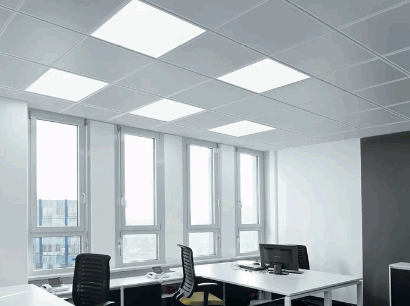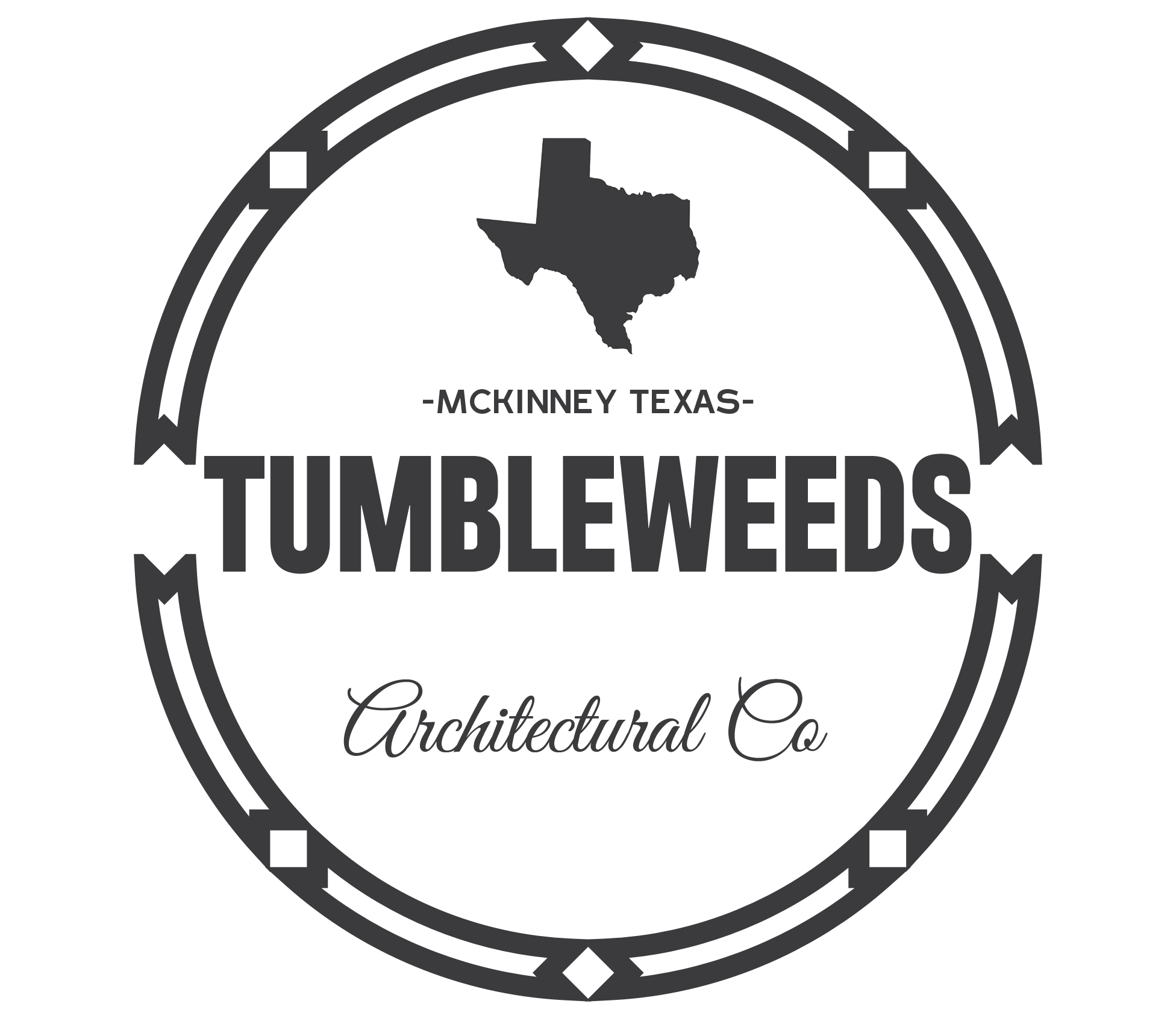LED lighting has become increasingly popular for its energy efficiency, longevity, and eco-friendly properties.
In this article, we will explore what LED lighting is, how it works, and the benefits it offers, such as cost savings and reduced carbon emissions.
We will also discuss the drawbacks of LED lighting, including the high upfront cost and limited color options.
Discover how LED lighting is sustainable, and the different types available, and get tips on incorporating LED lighting into daily life.
Join us as we shed light on the world of LED lighting.
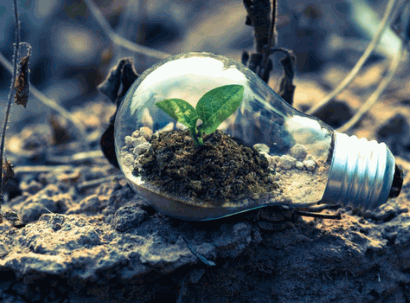
What Is LED Lighting?
LED lighting, a revolutionary technology in the illumination field, utilizes light-emitting diodes (LEDs) to provide energy-efficient and long-lasting light bulbs that surpass traditional incandescent and fluorescent lights in both performance and sustainability.
LED technology operates by converting electricity directly into light through the movement of electrons in a semiconductor material within the LED. This process is significantly more efficient than traditional incandescent bulbs, which rely on heating a filament to produce light, resulting in a wasteful generation of heat. In contrast, LEDs produce light with minimal heat output, making them not only energy-efficient but also safer and cooler to the touch. LEDs have a much longer lifespan, often lasting tens of thousands of hours compared to the shorter lifespan of incandescent bulbs.
LED lighting is also environmentally friendly, emitting less CO2 and containing no mercury, unlike fluorescent lights.
Discover: What Are The Advantages Of LED Lighting
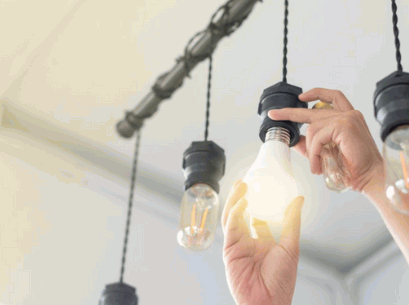
How Does LED Lighting Work?
LED lighting works by passing an electric current through a semiconductor material, which then emits light (photons) and produces illumination with varying degrees of brightness measured in lumens and color temperature measured in kelvin.
When an electric current is applied to a semiconductor in an LED fixture, it causes the electrons to move around within the material. These energized electrons release energy in the form of photons. The specific semiconductor material used determines the color of the light emitted. By controlling the composition of the semiconductor, manufacturers can produce LEDs that emit various colors of light.
The brightness of an LED light is measured in lumens. Lumens indicate how much light is produced by the fixture. Therefore, the higher the lumen output, the brighter the light will be. On the other hand, the color temperature of LED light is measured in kelvin, which signifies the warmth or coolness of the light. Warmer temperatures, around 2700-3000 kelvin, produce a cozy, yellow light often used in residential settings, while cooler temperatures, around 5000-6500 kelvin, emit a bright, daylight-like glow ideal for workspaces.
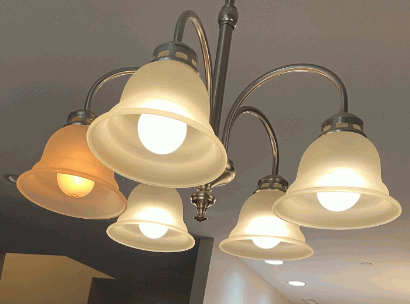
What Are The Benefits Of LED Lighting?
The benefits of LED lighting are numerous, ranging from impressive energy efficiency to significant environmental benefits, an extended lifespan, and reduced maintenance and costs, which ultimately contribute to less waste and greater sustainability.
Energy Efficiency
LED lighting is celebrated for its exceptional energy efficiency, as it significantly reduces energy use compared to traditional incandescent and fluorescent lights, thereby lowering the demand on power plants and leading to substantial energy savings.
This reduction in energy consumption is not only beneficial for individual households and businesses looking to cut down on electricity bills but also has a much larger impact on the environment and overall energy infrastructure. By minimizing the demand on power plants, LED lighting helps decrease greenhouse gas emissions and contributes to a more sustainable energy system. This shift towards energy-efficient lighting options aligns with global efforts to combat climate change and promote a greener, more eco-friendly future for generations to come.
Longevity
One of the major advantages of LED lighting is its remarkable lifespan, with some LED bulbs lasting up to 100,000 hours, which is far superior to traditional lighting options and highlights the durability of LED technology.
Compared to incandescent bulbs which typically last around 1,000 hours and fluorescent lights which last approximately 8,000 hours, the extended longevity of LEDs is truly impressive. This longevity not only reduces the frequency of replacements but also minimizes maintenance efforts, making LED lighting a cost-effective and convenient choice for both residential and commercial settings. With fewer replacements needed, users can enjoy consistent illumination without the hassle of constantly changing bulbs, contributing to a more sustainable and efficient lighting solution.
Eco-Friendly
LED lighting is eco-friendly, offering numerous environmental benefits such as a reduced carbon footprint, non-toxic materials that exclude harmful substances like mercury, and components that are more easily recyclable.
Compared to traditional lighting options, LED lighting stands out for its energy efficiency, consuming significantly less electricity and lasting longer. This longevity not only reduces the demand for new materials but also minimizes the overall waste generated. The production process of LEDs emits fewer greenhouse gases, further contributing to a greener environment. The absence of toxic elements in LEDs not only makes them safer to use but also prevents the release of harmful substances into the air or soil during disposal.
Cost Savings
The cost savings associated with LED lighting are significant, primarily due to their energy-efficient nature, which reduces electricity bills and results in long-term financial savings for both residential and commercial users.
When making the initial investment in LED lighting, the higher upfront cost is often a concern for many. It’s crucial to consider the long-term benefits. LED lights have a much longer lifespan compared to traditional incandescent or fluorescent bulbs, reducing the frequency of replacements and maintenance costs.
LED lighting consumes significantly less energy, translating into lower electricity bills over time. Studies show that switching to LED bulbs can save homes and businesses up to 80% on lighting energy costs. These savings can add up quickly, ultimately outweighing the initial purchase price.
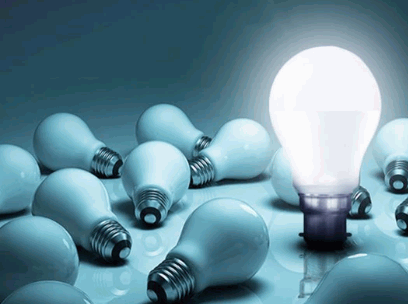
What Are The Drawbacks Of LED Lighting?
Despite the numerous advantages of LED lighting, there are some drawbacks to consider, such as the high upfront cost, limited color options, and potential blue light hazards, which can pose challenges for some users.
High Upfront Cost
One of the primary drawbacks of LED lighting is its high upfront cost, with initial investments ranging from $20 to $30 per bulb, which can be a significant barrier for some consumers.
The higher initial costs of LED lighting are justified by the numerous benefits it offers. LEDs are known for their energy efficiency, lasting significantly longer than traditional incandescent or fluorescent bulbs. This longevity translates into potential long-term savings on energy bills and replacement costs.
As LED technology continues to advance, prices are gradually decreasing, making them more accessible to a wider range of consumers. The market competition among manufacturers is also driving prices down, further enhancing the affordability of LED lighting solutions.
Limited Color Options
LED lighting offers limited color options compared to traditional lighting, as the color temperature measured in kelvin can affect the appearance of light fixtures and overall visibility, sometimes making it challenging to find the ideal lighting option for specific needs.
Although LED lights typically come in shades of white, such as cool white, daylight, and warm white, the choices for vibrant colors like reds, blues, and greens are more restricted. This limitation stems from the way LED lights produce color through phosphor coatings that can affect the available color spectrum.
Improvements in LED technology are gradually expanding the range of color options. For instance, some manufacturers are experimenting with RGB LEDs that allow for a broader color palette by mixing red, green, and blue light sources. This advancement opens up possibilities for customizable ambient lighting solutions.
Potential Blue Light Hazard
Another concern with LED lighting is the potential blue light hazard, which can have adverse effects on health by disrupting sleep patterns and causing eye strain, impacting overall visibility and well-being.
Blue light emitted by LEDs has been linked to a range of health issues, such as digital eye strain, which can lead to discomfort, dryness, and tiredness in the eyes. Studies suggest that prolonged exposure to blue light can also interfere with the production of melatonin, the hormone responsible for regulating sleep cycles, potentially leading to insomnia and disrupted circadian rhythms.
- To combat these negative effects, experts recommend limiting screen time in the evening
- using blue light filtering glasses or screen protectors
- and adjusting display settings to reduce blue light emissions.
Some electronic devices now offer built-in blue light reduction modes that automatically adjust the screen’s color temperature based on the time of day to minimize exposure to excessive blue light.
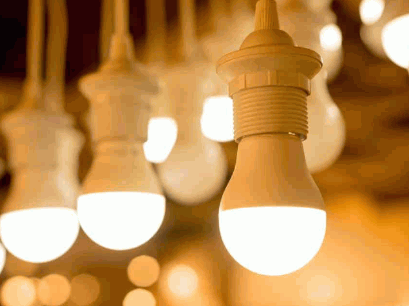
How Is LED Lighting Sustainable?
LED lighting is an embodiment of sustainability, providing energy savings, reducing carbon emissions, offering a longer lifespan, and incorporating recyclable components that together make it a green choice for modern lighting solutions.
Energy Efficiency
LED lighting promotes sustainability through remarkable energy efficiency, leading to significant energy savings and reduced burden on power plants, ultimately lowering electricity consumption and fostering a greener environment.
LED lighting’s exceptional energy efficiency not only results in direct cost savings for consumers but also plays a crucial role in reducing greenhouse gas emissions. LED technology requires significantly less power to produce the same amount of light compared to traditional incandescent or fluorescent lighting, thereby lessening the overall demand on the energy grid. This reduced electricity usage has far-reaching implications, as it lessens the reliance on fossil fuels and decreases the need for new power plant constructions, which in turn contributes to a more sustainable energy landscape.
Reduced Carbon Emissions
By significantly lowering energy consumption, LED lighting helps reduce carbon emissions and greenhouse gas emissions, thereby contributing to a decreased carbon footprint and a healthier environment.
LED lighting has been proven to be significantly more energy-efficient than traditional incandescent or fluorescent lighting options. According to studies, LED lights can reduce energy consumption by up to 70-80% compared to traditional bulbs, resulting in a substantial decrease in carbon emissions.
The long lifespan of LED bulbs means less frequent replacements, further reducing the overall carbon footprint of lighting systems. This long-lasting feature also contributes to a decrease in waste generation associated with lighting disposal.
Longer Lifespan
The longer lifespan of LED lighting means fewer replacements, which translates to less waste and greater durability, contributing to overall sustainability by reducing the environmental impact of discarded light bulbs.
LED lights have an average lifespan of 50,000 hours, compared to traditional incandescent bulbs which last around 1,000 hours, making them a much more sustainable choice.
This extended lifespan not only reduces the frequency of replacements but also lowers the amount of waste generated from discarded bulbs, which in turn lessens the strain on landfills.
The durability of LEDs means fewer resources are consumed in manufacturing and transporting replacement bulbs, further enhancing their environmental benefits.
Recyclable Components
LED lighting often comprises recyclable components and non-toxic materials, which make it easier to recycle and dispose of responsibly, further enhancing its sustainability credentials.
One of the most significant benefits of using such materials in LED lights is the reduction of environmental impact. When disposed of, these lights do not release harmful toxins into the environment, leading to a cleaner and safer ecosystem.
Recycling LED lights involves various processes, including separating the components, such as the LED chips and circuit boards, to ensure efficient recycling. These components can then be broken down and reused in the manufacturing of new LED products, reducing the need for raw materials and decreasing energy consumption.
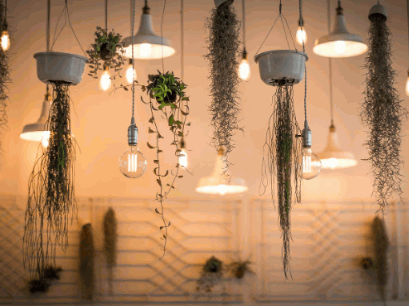
What Are The Different Types Of LED Lighting?
There are various types of LED lighting available to cater to different needs and applications, including LED bulbs, tubes, strips, and panels, all of which offer versatile lighting options for both residential and commercial fixtures, readily available at stores like Home Depot.
Bulbs
LED bulbs are a versatile and energy-efficient option for a variety of light fixtures, providing ample brightness and longevity for everyday use in homes and businesses.
One of the key benefits of using LED bulbs is their exceptional energy efficiency, which helps in reducing electricity bills and minimizing environmental impact. They have a longer lifespan compared to traditional incandescent bulbs, lasting up to 25 times longer. Their durability makes them ideal for both indoor and outdoor lighting applications. LED bulbs come in various brightness levels, ranging from soft warm white to bright daylight, allowing you to customize the lighting ambiance according to your preferences.
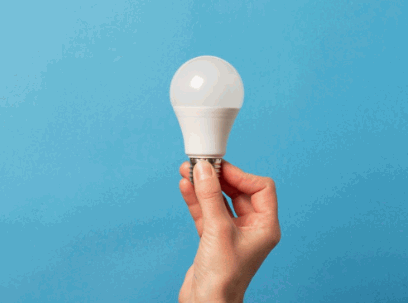
Tubes
LED tubes are designed to replace traditional fluorescent lights, offering reduced energy consumption and improved efficiency without compromising on light quality.
One of the key advantages of LED tubes is their long lifespan, sometimes lasting up to 50,000 hours. This not only reduces the frequency of replacements but also cuts down on maintenance costs significantly. Additionally, LED tubes are known for their durability and resistance to shock and vibration, making them ideal for rough industrial environments.
The directional nature of the light emitted by LED tubes allows for more focused illumination, reducing light wastage and ensuring better visibility in specific areas. These features make LED tubes particularly suitable for commercial and industrial settings, where energy efficiency, longevity, and reliability are essential.
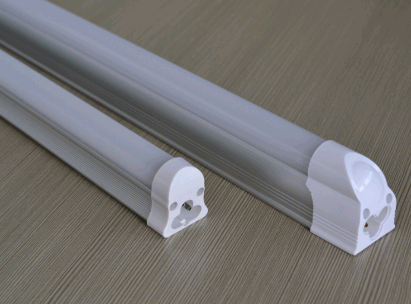
Strips
LED strips are popular for accent lighting, providing flexible and customizable options to enhance visibility and aesthetics in a variety of settings.
One of the unique features of LED strips is their versatility. They come in various lengths, colors, and brightness levels, allowing users to create the perfect ambiance for any space. Whether it’s for adding a soft glow to a living room, creating a focal point in a retail store, or highlighting architectural features in a hotel lobby, LED strips can be easily adapted to suit different needs.
LED strips are energy-efficient, making them a sustainable lighting solution for both residential and commercial spaces. With advancements in technology, modern LED strips are not only durable and long-lasting but also offer options for dimming and color changing, providing endless possibilities for creating dynamic lighting effects.
Another key advantage of LED strips is their ease of installation. They can be mounted virtually anywhere, from under cabinets and shelves to around mirrors and ceilings, making them ideal for both functional and decorative purposes. With the ability to be controlled remotely through smart devices, LED strips offer convenience and hassle-free operation.
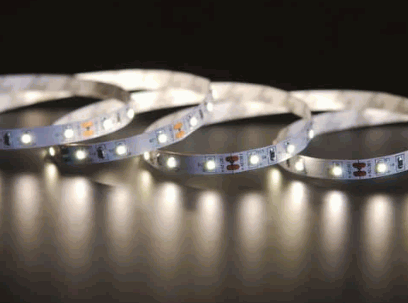
Panels
LED panels offer a modern and energy-efficient solution for large-scale illumination, ideal for offices, retail spaces, and other commercial environments where high-quality lighting is essential.
One of the key advantages of LED panels is their exceptional energy efficiency. Compared to traditional lighting options, such as fluorescent or incandescent bulbs, LED panels consume significantly less electricity while providing the same level of brightness. This not only leads to cost savings on energy bills but also contributes to reducing the overall carbon footprint of a building or facility.
LED panels are renowned for their ability to deliver uniform and high-quality illumination across a given area. This means that there are no dark spots or flickering lights, ensuring a comfortable and productive environment for employees, customers, or visitors. The consistent lighting provided by LED panels can enhance visibility, reduce eye strain, and even improve overall mood and well-being.
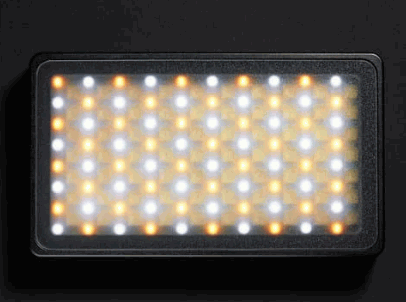
How Can Individuals Incorporate LED Lighting In Their Daily Lives?
Incorporating LED lighting into daily life can be a game-changer for home improvement, offering energy-efficient and versatile options such as switching to LED bulbs, using LED strips for accent lighting, and installing LED panels for optimal illumination.
Switching To LED Bulbs
Switching to LED bulbs is an easy and effective way to achieve energy-efficient lighting and enjoy significant savings on electricity bills.
LED bulbs provide numerous advantages over traditional incandescent or fluorescent options. Not only do they consume less energy, but they also have a longer lifespan, reducing the need for frequent replacements. LED bulbs emit less heat, making them safer to use and helping to lower cooling costs in the warmer months. In terms of energy efficiency, LED technology stands out as a superior choice for environmentally-conscious consumers looking to reduce their carbon footprint.
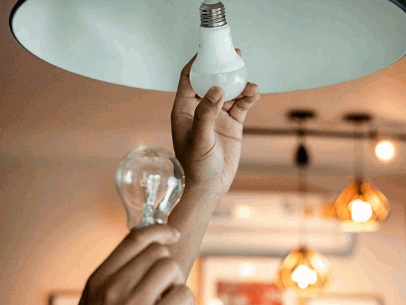
Using LED Strips For Accent Lighting
Using LED strips for accent lighting is a popular choice for enhancing visibility and creating stylish and customizable lighting effects in various areas of the home.
Installing LED strips is a straightforward process that can be done by adhering them to the desired surface using adhesive backing. These strips are incredibly versatile, allowing you to trim them to fit specific lengths, bend them around corners, and even change colors to suit different moods and settings.
The benefits of LED strips extend beyond their aesthetic appeal. They are energy-efficient, durable, and emit little heat, making them safe for different applications. The low profile of these strips makes them ideal for under cabinets, shelves, or even staircases, providing both functional lighting and an element of ambiance.
In terms of creative applications, the possibilities are endless. For example, in the kitchen, you can install LED strips under cabinets to illuminate the countertop or create a cozy vibe in the living room by installing them behind the TV or under the seating area. In bedrooms, these strips can be used around the headboard for a soft glow or along the ceiling for a starry night effect.
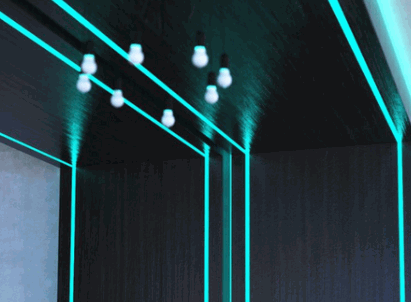
Installing LED Panels For Energy-Efficient Lighting
Installing LED panels is an excellent way to achieve energy-efficient lighting with high-quality illumination, perfect for larger spaces like living rooms, kitchens, and home offices.
LED panels are not only energy-efficient but also provide a consistent, bright light that can enhance the ambiance of any room. The installation process is relatively simple, and once installed, they require minimal maintenance compared to traditional lighting fixtures. These panels are versatile and can be easily integrated into various parts of the home, from overhead ceiling lighting in the living room to under-cabinet lighting in the kitchen.
